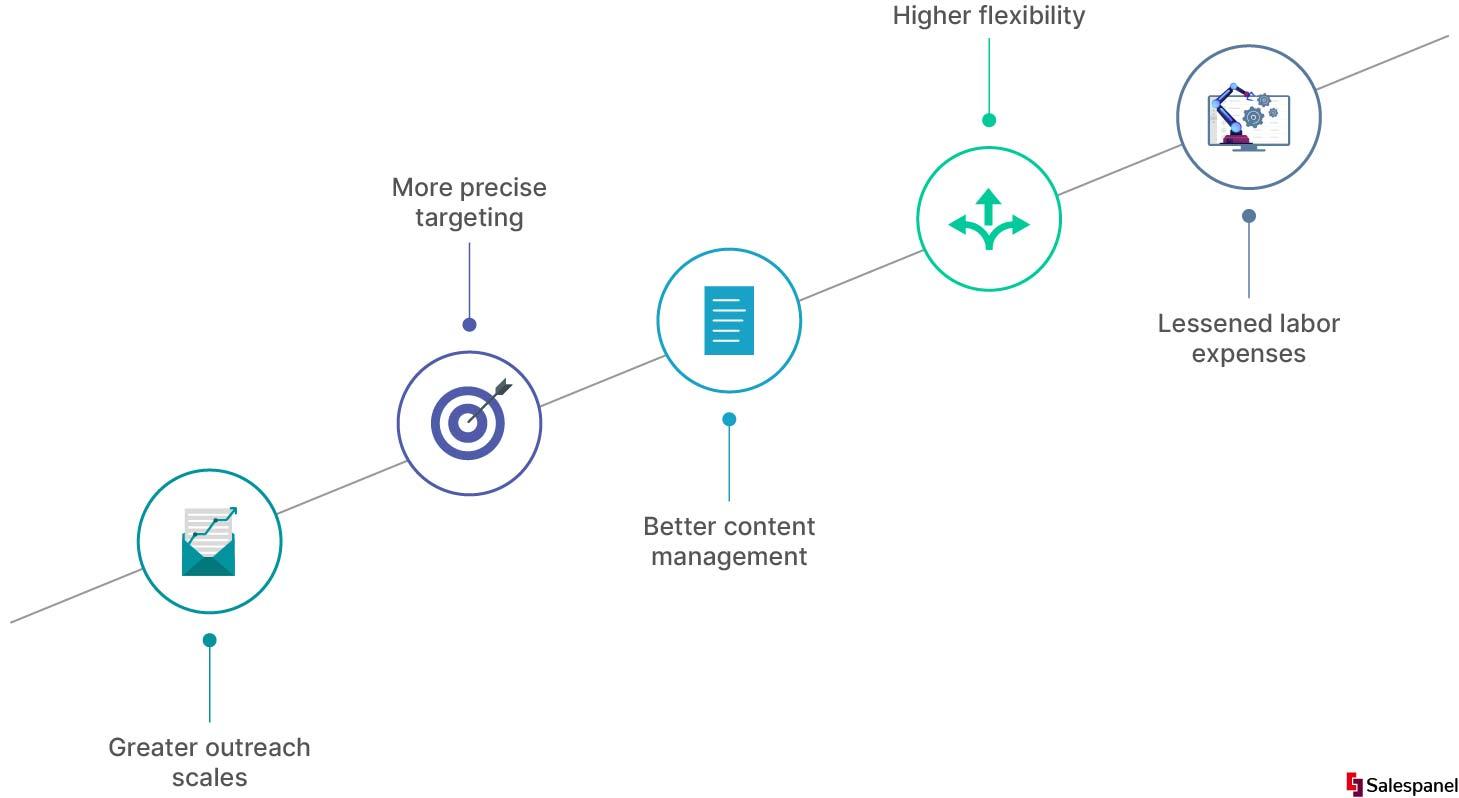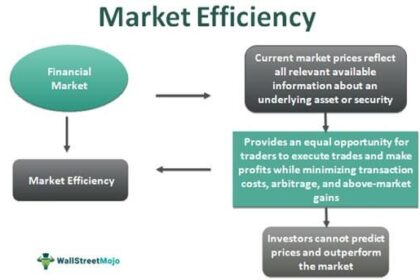In an era where convenience reigns supreme, the evolution of commerce has taken on a new face, one that seamlessly blends technology with consumer experience. Welcome to the age of automation in e-commerce, where the click of a button can trigger a cascade of intricate processes that work tirelessly behind the scenes. From personalized shopping experiences to inventory management and customer service, automation is not just a trend—it’s a transformative force shaping the future of how we shop and sell. As retailers harness the power of artificial intelligence, machine learning, and robotics, the landscape of e-commerce is rapidly evolving, creating opportunities and challenges alike. In this article, we delve into the multifaceted dimensions of automation in e-commerce, exploring its implications for businesses and consumers, and envisioning a future where efficiency and innovation go hand in hand.
Evolving Customer Experiences Through Automated Personalization
In the dynamic realm of e-commerce, the ability to cater to individual preferences is transforming the customer journey into a personalized experience that feels intuitive and engaging. Leveraging automated systems, businesses can now analyze vast amounts of data to uncover trends and insights that drive tailored recommendations. This evolution not only enhances user satisfaction but also fosters loyalty, as customers are more likely to return to a platform that understands and anticipates their needs. Some strategies employed include:
- Behavioral Tracking: Monitoring user activity to suggest products based on past purchases and browsing history.
- Dynamic Content Delivery: Customizing web pages in real-time to display relevant offers and products.
- Email Marketing Automation: Sending personalized emails that resonate with the user’s interests and shopping habits.
Furthermore, the integration of machine learning algorithms allows platforms to refine their personalization efforts continually. By evaluating user interactions and feedback, these algorithms can optimize recommendations, enhancing the overall shopping experience. A table summarizing how automation enhances various aspects of personalization can be illustrated as follows:
| Aspect | Impact of Automation |
|---|---|
| Customer Insights | In-depth analysis of preferences leading to better targeted promotions. |
| Engagement | Increased interaction through relevant recommendations and timely communications. |
| Sales Performance | Higher conversion rates through tailored product suggestions. |

Streamlining Operations with Intelligent Inventory Management
In today’s fast-paced e-commerce landscape, optimizing inventory management is a pivotal step towards achieving operational efficiency. Intelligent systems allow businesses to automate various processes, freeing up valuable time and resources. By implementing real-time tracking, companies can monitor stock levels and gain insights into customer demand trends. This aids in reducing excess inventory while ensuring products are available when customers need them the most. Here are a few benefits of integrating such systems:
- Improved Accuracy: Minimizes human error in inventory counts.
- Enhanced Forecasting: Uses historical data for precise demand planning.
- Cost Reduction: Lowers storage costs through efficient stock management.
Moreover, automation simplifies the replenishment process by setting automatic reorder points based on predictive analytics. As sales patterns fluctuate, intelligent inventory management systems can adjust inventory levels accordingly, preventing stockouts or overstock situations. This creates a seamless flow within the supply chain, ensuring that retailers are well-equipped to meet customer expectations. Consider the following comparison of traditional vs. automated inventory management:
| Aspect | Traditional Inventory Management | Automated Inventory Management |
|---|---|---|
| Data Accuracy | Manual entries prone to errors | Real-time updates with low error rates |
| Replenishment Speed | Slow, often reactive | Fast, proactive adjustments |
| Operational Cost | Higher due to inefficiencies | Lower through streamlined processes |

Harnessing Data Analytics for Smarter Decision Making
In the rapidly evolving world of e-commerce, leveraging data analytics is paramount for driving insightful decisions that can enhance customer experience and optimize operational efficiency. Brands are beginning to utilize advanced algorithms and machine learning to sift through vast amounts of consumer data, uncovering patterns that influence buying behavior. For instance, businesses can identify which products are frequently bought together, enabling them to create tailored marketing strategies that resonate with their target audience. By implementing these strategies, organizations can improve inventory management, streamline logistics, and ultimately, increase their profitability.
Moreover, real-time data analytics allows e-commerce platforms to monitor customer interactions and responses instantaneously, providing a unique opportunity to adapt processes on-the-fly. Insights gathered from customer feedback can guide product development and improve service offerings, aligning closely with consumer needs. When integrated effectively, automated systems can personalize user experiences, leading to enhanced engagement and loyalty. Below is a simple overview of potential benefits:
| Benefit | Description |
|---|---|
| Enhanced Personalization | Tailoring content and offers based on user history. |
| Improved Inventory Management | Optimizing stock levels based on predictive analytics. |
| Customer Retention | Increased loyalty through engagement strategies. |

Enhancing Marketing Strategies with Automated Campaign Solutions
In the fast-paced world of e-commerce, leveraging automated campaign solutions is crucial for enhancing engagement and driving conversions. By integrating these advanced tools, businesses can streamline their marketing efforts, ensuring that every interaction with potential customers is not only timely but also relevant. This technology enables the segmentation of audiences, allowing for tailored messaging that resonates with specific demographics. Key benefits of utilizing automated campaigns include:
- Increased Efficiency: Automation reduces the time spent on manual tasks, freeing up marketers to focus on strategy.
- Personalization at Scale: Custom messages can be sent at scale based on user behavior and preferences.
- Data-Driven Decisions: Real-time analytics help refine campaigns and improve targeting.
Moreover, automated solutions can significantly enhance customer relationships through consistent follow-ups and nurturing. Each step of the customer journey can be optimized by implementing trigger-based responses that adapt to user interactions. To illustrate the impact of these strategies, consider the following table showcasing potential outcomes:
| Campaign Type | Engagement Rate | Conversion Rate |
|---|---|---|
| Welcome Email Series | 65% | 20% |
| Abandoned Cart Reminders | 70% | 30% |
| Post-Purchase Follow-Up | 60% | 25% |
Implementing such automation not only boosts efficiency but also cultivates a loyal customer base, as shoppers feel valued and understood in their shopping journey. Embracing automated campaign solutions is not just a trend but a necessity for sustainable growth in the competitive e-commerce landscape.
In Conclusion
As the sun sets on our exploration of automation in e-commerce, it’s clear that we stand on the brink of a transformative era. From streamlined inventory management to personalized customer experiences, automation is not just a trend; it’s woven into the very fabric of retail’s future. While the road ahead may be filled with challenges, the potential for innovation and efficiency is boundless. Businesses that embrace these advancements will not only thrive but will redefine what it means to connect with consumers in a digital marketplace. As we close this chapter, let us remember that automation is not an endpoint but a stepping stone towards a more agile and responsive e-commerce landscape. The journey has just begun—one that promises to shape the way we shop, sell, and interact in the world of commerce.



